Are you ready to turn Black Friday into a game-changer for your sales? Do you have a strategy that cuts through the competition, reaches your target audience, and drives maximum conversions?
Black Friday isn’t just another sales event. It’s one of the year’s biggest shopping days, where savvy strategies can differentiate between standout success and missed opportunities.
To make the most of it, brands must go beyond discounts and tap into marketing techniques, customer psychology, and robust engagement tactics.
Understanding Black Friday marketing
Black Friday is a significant shopping event that occurs every year right after Thanksgiving. The holiday buying season starts with retailers offering steep discounts, exclusive promotions, and special deals. Customers expect incredible savings, and businesses often see record-breaking sales.
For ecommerce, Black Friday has become more than just a single day. Many brands launch their promotions early, aiming to capture eager shoppers as soon as possible. This extended sales period has transformed holiday shopping habits, with more people than ever choosing online shopping in overcrowded stores.
The numbers tell the story. In 2023, Black Friday sales in the US hit $9.8 billion, highlighting the power of this day for online retailers. And it doesn’t stop there. The Cyber Monday sales reached $12.4 billion, showing that shoppers keep the momentum going right into the following week (source).
Preparing for Black Friday
Adequate preparation is critical to maximizing your sales as Black Friday approaches. A well-thought-out strategy can significantly impact your sales outcomes.
1. Start early with teaser campaigns
Building excitement early is essential for a successful Black Friday campaign. Teaser campaigns help engage your audience, raise awareness, and ensure you’re remembered when the big day arrives.
-
Begin 2-3 weeks ahead: Launch your teasers two to three weeks before Black Friday. Sending early teaser emails lets customers know something big is coming, helping to generate curiosity without giving away all the details. It sets the stage for your sales, allowing your audience time to anticipate and plan purchases.
-
Keep the mystery alive: Drop hints about your upcoming discounts instead of revealing exact deals. Use phrases like “exclusive discounts await” or “prepare for our biggest sale yet.” Doing so keeps customers intrigued and eager to check back when the sale goes live.
-
Social media buzz: Social media is invaluable for building excitement around Black Friday deals. Share countdowns, sneak peeks, or polls to interact with your followers. Platforms like Instagram Stories and TikTok also offer unique ways to showcase glimpses of deals or products in a way that drives engagement and adds a layer of excitement.
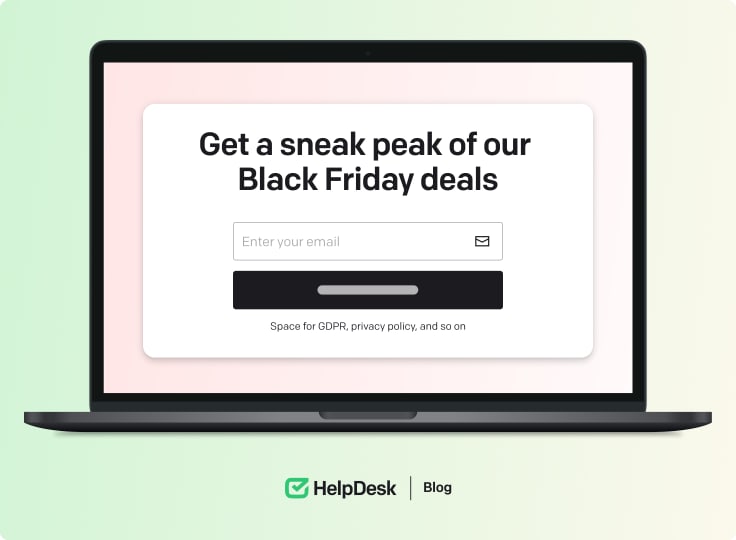
2. Prepare your marketing lists
Good email marketing for Black Friday relies on precise targeting, which means having well-organized and segmented marketing lists is essential. Only some people respond to the same deal, and segmentation helps personalize the experience.
Segment by behavior and purchase history
Group your customers based on their behavior and purchase history. This way, loyal customers who have previously purchased can receive special loyalty discounts, while newer customers might get a warm welcome or introductory discount. For example, if someone bought a specific product last year, consider offering them a discount on related items or upgrades.
Personalize by preferences or location
Knowing customer preferences allows you to target them more effectively. Segment potential customers by interests or preferences, offering relevant products or deals. Location-based segmentation also helps if you want to offer special promotions for specific regions or highlight local shipping options or delivery times.
Use analytics tools like Meta Pixel
Before your campaign goes live, ensure tracking tools like the Meta Pixel function accurately. Proper tracking lets you gather insights on user behavior, conversions, and ad performance, helping you understand tactics. Ensure that all customer data sources, such as Google Analytics and CRM systems, are correctly syncing so you can measure the impact of your Black Friday marketing campaign with precision.
Integrate HelpDesk with your CRM to streamline customer relationship-building activities 🏗️ Try HelpDesk for 14 days for free!
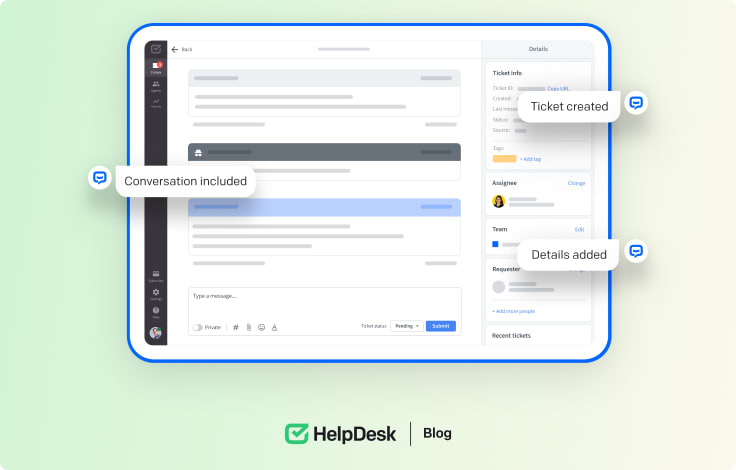
Black Friday marketing strategies
To make the most of Black Friday, plan a comprehensive strategy combining different promotions and marketing techniques to attract customers. A multifaceted approach can help you stand out in a highly competitive space.
Develop a winning Black Friday marketing strategy
This season, aim for a well-rounded approach to maximize customer interest and conversions.
-
Early-bird specials and flash sales: Start your sales with early-bird offers to reward customers who plan. A flash Black Friday sale creates urgency and encourages quick purchases. Combine these with extended store hours and targeted promotions to maximize reach and sales potential.
-
Aggressive advertising campaigns: Build momentum by investing in campaigns across multiple platforms. Use ads to showcase limited-time offers, highlight product categories, or announce exclusive promotions, ensuring your brand remains visible and competitive during the holiday rush.
-
Exclusive loyalty discounts: Show appreciation to loyal customers with exclusive deals or early access to sales. Offering these perks builds trust and enhances customer retention, making your brand a go-to choice for future holiday seasons.
Keep your customers satisfied with HelpDesk and sell more this Black Friday! 🚀 Try it for free!
Social media and influencer marketing
Social media’s reach is a powerful tool for amplifying your Black Friday marketing campaigns. From creating brand awareness to engaging directly with your customers, it can help drive significant traffic and interest.
-
Partner with influencers: Collaborating with influencers creates authentic visibility for your products. Influencers sharing Black Friday “haul” videos and showcasing products can spark interest and boost trust, making their followers more likely to visit your store and purchase.
-
Build buzz with social posts: Use platforms like Instagram, TikTok, and Facebook to create countdowns, reveal sneak peeks, and share Black Friday deals in real time. Quick, engaging posts can generate excitement and attract your campaign’s attention.
-
Collaborate with a cause: Consider partnering with a non-profit organization and promoting a cause your brand supports. Showing customers that your Black Friday sales contribute to a greater good can boost your brand’s reputation, add meaning to the sale, and create a lasting positive impression.

Creating Black Friday deals
Limited-time deals are a powerful way to attract customers and drive fast conversions on Black Friday.
Offer limited-time Black Friday deals
Limited-time discounts are a classic Black Friday tactic, and for good reason — they work. Customers who see an exclusive discount that won’t last long are likelier to act quickly.
Focus on offering deeper discounts than what customers might see throughout the year. For example, if your usual promotions offer 10-20% off, consider going up to 30-50% for Black Friday. Reserve these discounts for Black Friday only, which heightens exclusivity and positions your online store more as the go-to option for holiday shopping.
Promote them as limited-time offers and let your customers know that once these deals are gone, they won’t come back. This tactic taps into the psychological effect of scarcity, which can drive impulsive buying decisions.
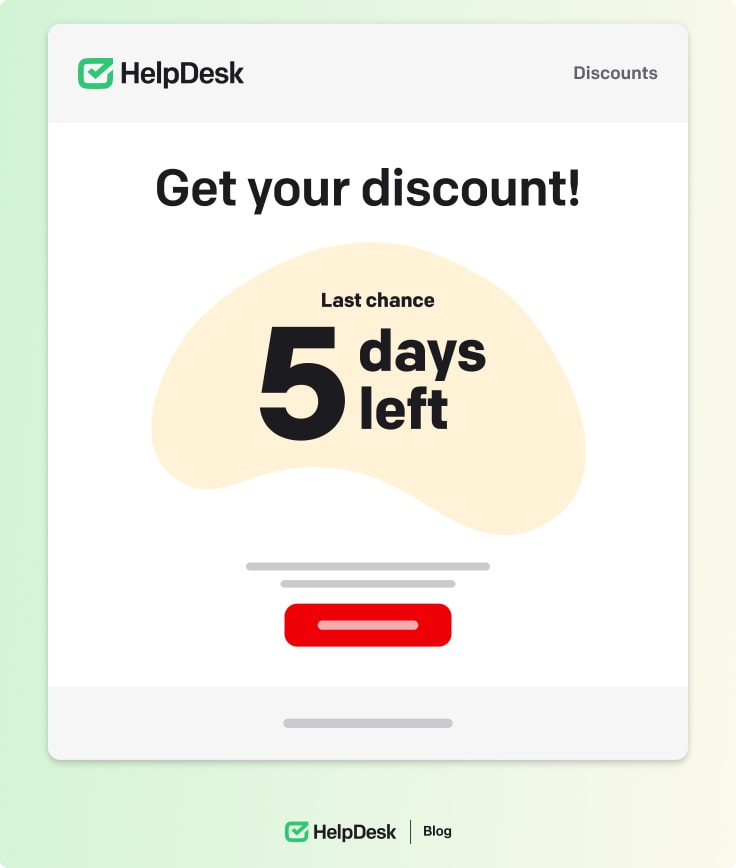
Bundle deals
Bundling products is a good Black Friday marketing tactic to increase the perceived value of your offer. Customers love bundles because they feel they’re getting more for less. Bundles also allow you to introduce customers to additional products they might have yet to purchase independently.
Pair related items together to make your bundles more attractive. For example, if you sell skincare products, create bundles that include a cleanser, moisturizer, and serum, offering them at a combined discounted price.
Create different levels of bundles, such as basic, mid-range, and premium, each with a progressively higher discount.
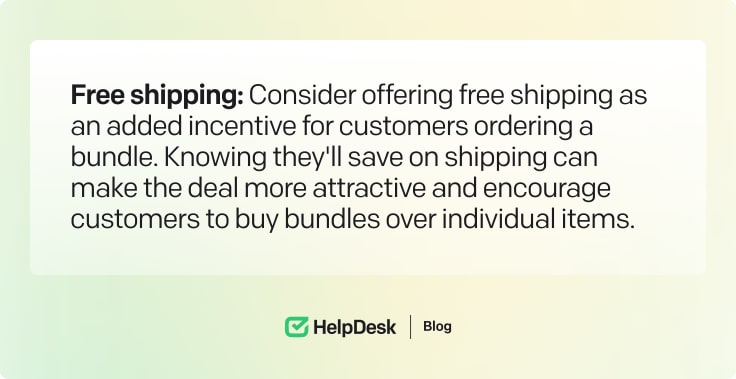
Trigger FOMO with countdown timers
Fear of missing out (FOMO) is a powerful motivator, especially during limited-time sales. Countdown timers create a sense of urgency, clarifying that deals won’t last forever.
Display timers on product pages for high-priority deals. When customers view an item, they’ll be reminded of the limited time left to get it at the discounted price.
Use Stories to post countdowns for special deals on platforms like Instagram and Facebook. Many social media platforms have countdown stickers or alert features, making reminding followers of your offers easy.
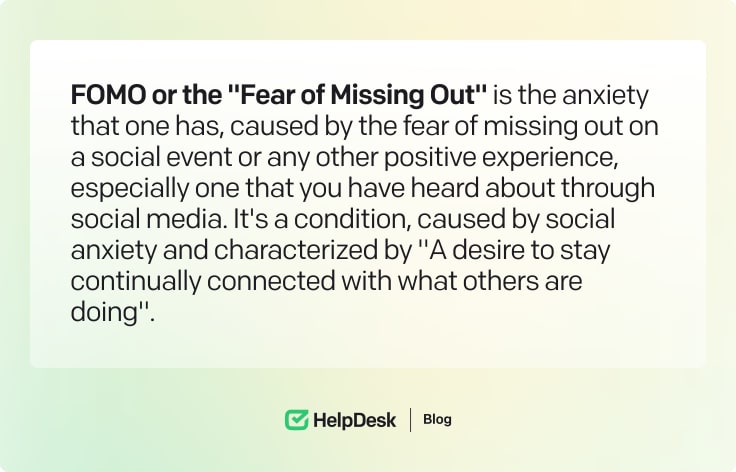
Email marketing and loyalty programs
Effective email marketing can significantly impact your Black Friday campaigns, especially when combined with a robust loyalty program. To do so:
Send targeted email campaigns
A one-size-fits-all email campaign will not work today. Segment your list based on customer data and tailor your message to each customer’s needs.
-
Behavior and purchase history: Track customers’ browsing habits, cart history, and purchase patterns to gain insights into their interests. For example, if someone recently viewed specific products but didn’t purchase them, a targeted email highlighting discounts on those items could nudge them to decide. Similarly, customers who’ve previously bought from you may appreciate emails that suggest complementary items or showcase similar products.
-
Target by preferences and location: Personalize further with customer preferences and geographic location. Consider offering region-specific deals or promoting popular items locally if your customer base spans multiple regions. Also, use preferences such as brand or product category to send targeted promotions, showcase relevant items, and make your customers feel understood.
-
Timing and frequency: Timing is everything in the holiday season. Consider sending a “save the date” email in advance, followed by teaser emails that build excitement. As the big day approaches, increase the frequency but avoid overwhelming your audience.

Create offers for loyalty program members
Your loyal customers should feel special during Black Friday. Offering exclusive discounts and early access to sales for loyalty program members or regular customers can enhance customer retention and strengthen their relationship with your brand.
Allow loyal customers to shop Black Friday deals before anyone else. Send a special “early access” email to your loyalty members, inviting them to exclusive discounts a day or a few hours before the general sale begins.
If your loyalty program has multiple tiers, consider offering discounts based on a customer’s membership level.
Use loyalty points or rewards that can be redeemed for Black Friday purchases. If customers have accumulated specific points, let them redeem them for Black Friday discounts or add-ons.
Practical tips for implementation
To maximize the performance of these strategies, here are some tips:
-
Subject lines: Personalized subject lines can significantly improve open rates. To tailor emails, use customer names or interests or mention their loyalty tier in the subject line.
-
Design responsive emails: Make sure your emails are optimized. Clear layouts, clickable buttons, and readable text will enhance the experience for on-the-go shoppers.
-
Monitor and test: Before the big day, A/B tests your email templates, headlines, and offers to see what resonates best with your audience. Track metrics like open rate, click-through rate, and conversion rate to identify areas for improvement.
Maximizing Black Friday sales
Focus on responsiveness and mobile optimization to create a seamless shopping experience for every visitor and ensure you’re ready for Black Friday.
Responsive website
A responsive website is essential for Black Friday’s success. With traffic pouring in from various devices, including desktops, tablets, and smartphones, your ecommerce store website should adapt seamlessly to all screen sizes and orientations to provide an intuitive shopping experience.
A fully responsive site automatically adjusts its layout to suit the screen on which it is viewed. Images, buttons, and text should scale appropriately, ensuring device clarity without compromising quality.
Ensure product images, descriptions, and call-to-action (CTA) buttons are easily accessible, allowing visitors to browse and shop without friction.
Optimize for mobile users
With more people shopping on mobile than ever, optimizing for mobile is crucial to meet customer expectations and maximize conversions. A smooth, efficient mobile experience can distinguish between a sale and an abandoned cart.
Streamline the checkout process for mobile users. A mobile-friendly checkout should minimize the steps required to complete a purchase and include features like auto-filled information fields, easy payment methods, and a simple design. Ensure that buttons are large enough to be tapped easily and that forms are short and easy to complete.
Conduct tests on various mobile devices and browsers to ensure a consistent experience. Differences in screen sizes, resolutions, and browser capabilities can impact your site’s display.
Provide the best customer experience with a robust ticketing system. HelpDesk is here to take care of your communication with users. 🚀
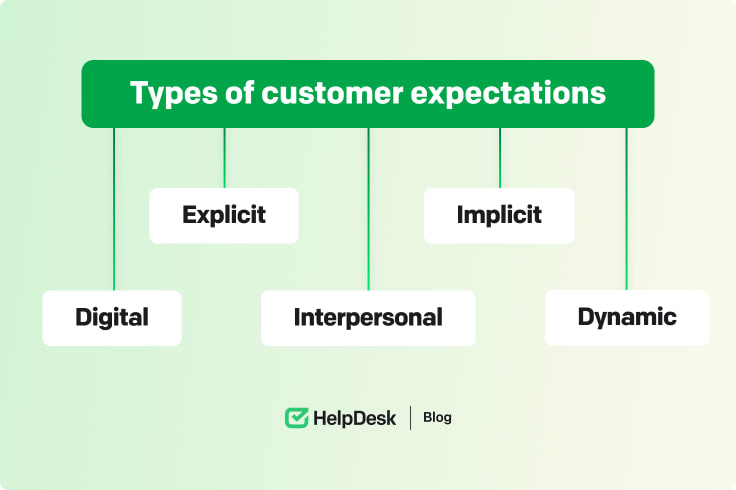
Exit-intent popups
Exit-intent popups detect when a user is about to leave the page and can serve as a last opportunity to capture their interest and encourage them to complete their purchase. Done effectively, these popups can significantly reduce cart abandonment and boost conversions.
Offering a small discount or free shipping to visitors about to leave the site can persuade them to stay and complete their purchase.
Also, use exit-intent popups to remind visitors if stock is low or a sale is ending soon. A message like “Only a few items left in stock!” can create urgency and increase the chances of conversion.
Even if customers aren’t ready to buy immediately, you can use exit-intent popups to capture email addresses. In exchange for their email, offer something valuable, like an exclusive Black Friday guide or a discount code for future purchases.
Post-Black Friday strategies
After the hustle and bustle of Black Friday, it’s crucial to take a step back and analyze the results of your online sales campaign. It can provide valuable insights into what strategies worked and what didn’t and how to enhance your approach for the Cyber Monday marketing strategy.
Track your sales and website traffic
Gather sales and website traffic data to analyze your Black Friday performance. Use analytics tools to measure key metrics that will inform your assessment.
-
Sales metrics: Examine your total sales revenue, average order value (AOV), and total number of transactions. Look for patterns in what products sold best and which categories were most popular. Identifying high-performing items can help you understand your customers’ preferences and tailor future offerings accordingly.
-
Traffic sources: Analyze where your website traffic came from during the Black Friday sale. Were most visitors driven by email campaigns, social media ads, organic search, or referral traffic? Understanding the most critical channels will help you allocate resources more efficiently for future marketing campaigns.
-
Conversion rates: Calculate your conversion rate by dividing the number of sales by the total number of visitors to your site. A high conversion rate suggests that your marketing messages resonated well with customers, while a low rate may indicate issues with your website’s user experience or product offerings.
Evaluate the results
Once you have gathered your data, it’s essential to analyze it to determine the effectiveness of your strategies.
Identify successful campaigns
Look for the campaigns that generate the most engagement and sales. It includes specific email marketing strategies, social media promotions, or influencer collaborations. Analyze these campaigns’ content, timing, and frequency to understand why they performed well.
Assess underperforming strategies
Equally important is identifying what didn’t work. Were there particular promotions or products that fell flat? Did any marketing channels underperform? Use this information to refine your approach for next time.
For instance, if a specific email campaign yielded low open rates, consider experimenting with different subject lines or content formats.
Use data for future strategies.
Using your Black Friday analysis data is crucial for enhancing future marketing strategies. To refine your targeting, tailor messages to demographics that showed strong engagement.
Improve website user experience by examining metrics like bounce rates and time on site, optimizing checkout processes, product descriptions, and navigation to reduce drop-offs.
Also, develop year-round engagement strategies by promoting products or categories that performed well during Black Friday, ensuring continuous customer interaction and interest.

Extend the momentum of the Black Friday sale
Once the dust has settled, don’t let the momentum you gained during Black Friday slip away. Use Cyber Monday and other promotions to keep customers engaged.
Leverage the excitement built during Black Friday by offering additional discounts or upcoming deals on Cyber Monday. It can capture customers who may have missed out or those looking for last-minute gift options. Promote these deals heavily across your channels to encourage quick purchases.
Also, consider launching a “Thank you” sale for customers who engaged during Black Friday. It could involve exclusive discounts for those who made a purchase, encouraging repeat business and fostering loyalty.
Summary
Maximizing your sales this Black Friday requires a strategic blend of preparation, targeted marketing, and exceptional customer support. Each step, from early marketing campaigns to well-optimized websites, drives engagement and conversions.
Remember the importance of robust customer support during this busy time. Using a tool like HelpDesk can elevate your service game. With its ticket management system, HelpDesk efficiently logs, tracks, and prioritizes customer inquiries, ensuring timely issue resolution.
Asynchronous communication across various channels fosters transparency and clarity, while automation features enhance support efficiency. Gathering customer feedback through HelpDesk also helps tailor your offerings to meet customers’ needs better.
Adopting these Black Friday marketing ideas and integrating HelpDesk will maximize holiday sales and build lasting customer relationships that will pay off well beyond the holiday season. Embrace the excitement of the sale while ensuring your customers feel valued and supported every step of the way!


